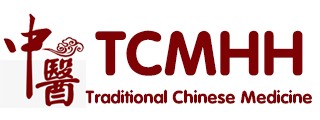NAME
GUANYUAN
LOCATION
3 cun inferior to the umbilicus, on the anterior midline.
On the midline of the lower abdomen, 3 cun inferior to the umbilicus and 2 cun superior to the pubic symphysis.
NEEDLING
Slanted insertion, pointed downward, 1.5 to 2 cun. Sensation: local distention and soreness, sometimes extending to the genitals.
Puncture perpendicularly, 0.8 to 1.2 cun.
Moxibustion is applicable.
Perpendicular insertion 0.5 to 1 cun, or oblique insertion directed inferiorly 1 to 1.5 cun.
Caution: deep insertion may penetrate a full Bladder which should therefore be emptied before treatment.
COMMAND FUNCTIONS
Front Mu Point of the Small Intestine
Intersecting point of the Liver, Spleen and Kidney channels on the REN channel
ACTIONS
Tonifies and nourishes the Kidneys
Tonifies Yuan Qi
Benefits Jing
Regulates the Lower Jiao
Benefits the Bladder
Warms and fortifies the Spleen
Regulates menstruation
Tonifies Qi and Blood
Nourishes Blood and Yin
Warms Cold
Enriches Yin
Drains pathogenic influences from the Heart
Stabilizes Kidney Qi
Warms the Yang
Raises Middle Qi
Regulates the water pathways
Regulates the Small Intestines
Resolves Dampness and Damp-Heat (especially of the Lower Jiao)
Dries Dampness
Dries Cold-Dampness
Restores Collapsed Yang or Yin
Regulates the uterus
Assists conception
Calms the mind
Roots the Ethereal Soul
Stimulates the testes
Stimulates sex hormones
INDICATIONS
Kidney Deficiency
Kidney taxation
Abandoned-type Windstroke
Seizures
Chronic consumptive disorders
Lower Jiao wasting and thirsting syndrome with frequent urination
Restless fetus disorder due to Deficiency
Asthma due to Kidney Deficiency
Pulmonary tuberculosis with chills and shortness of breath
Hypertension
Neurasthenia
Forgetfulness
Insomnia
Dizziness and vertigo due to Qi and Blood Deficiency
Emaciation with lassitude
Emaciation with constant thirst
Lower abdominal pain
Postpartum abdominal pain
Lochioschesis
Abnormal uterine bleeding
Red and white leukorrhea
Irregular menstruation
Prolonged menstruation
Inflamed testicles
Dysmenorrhea
Enuresis
Amenorrhea
Hernia
Hemafecia
Frequent urination
Postpartum hemorrhage
Frigidity
Very swollen abdomen
Cold menstrual disorders
Yin Deficient menstrual disorders
Aversion to Cold in the back
Withered ears
Fear
Fear leading to Deficiency consumption
White turbidity
Bleeding during pregnancy
Taxation Heat
Kidney Deficiency dyspnea
Wind dizziness
Lethargy
Lack of strength
Weakness of Spleen Qi
Incontinence of stool in the elderly
Vomiting of Phlegm
Dark urine
The five types of painful urinary dysfunction (Lin)
Edema that leads to pain in the lateral costal region
Cold accumulation with Deficiency
Lower abdominal fullness
Intense Heat in the hypogastrium
Heaviness of the body like a mountain
Syrupy or Qi-type painful urinary dysfunction
Infertility
Impotence
Spermatorrhea
Headache
Rectal prolapse
Stomach prolapse
Uterine prolapse
Abdominal distention and pain
Diarrhea with tenesmus
Dysenteric disorders
Chronic nephritis
Dysuria
Urinary incontinence
Chyluria
Urinary tract infection
Prostatitis
Abandoned-type coma
Collapsing syndrome with cold extremities
Shock
Generalized weakness
Tidal fever
Thirst
A vague feeling of fear at night
Pelvioperitonitis
Roundworms in the intestinal tract
Twisting pain below the navel that gradually radiates to the genitals
Hematuria
Tidal fever with hemoptysis
Nocturnal emission
Retention of urine
Indigestion
Uterine fibroids
Male sterility
Nephritis
Weakness of the lumbar region and legs
Lumbar pain in the middle aged and elderly
Pain of the bones and leg joints in the middle aged and elderly
Gradual darkening of the face
Fright
Deep-rooted bone ulcers due to fear
Infertility with cold sensations in the vagina
Persistent flow of lochia
Deficiency consumption with cough
Dyspnea with inability to lie down
Wasting and thirsting disorder
Emaciation of the four limbs despite much eating
Weakness of the four limbs
Undigested food in the stools
Belching
Retention of urine due to fetal pressure
Urolithiasis (Stone Lin)
Burning pain on urination
Cold Qi entering the lower abdomen giving rise to pain
Running piglet Qi rising to the Heart
Sudden turmoil disorder
Tremor of the hands
COMBINATIONS
| SP-1 Yinbai SP-10 Xuehai ST-36 Zusanli | REN-2 (join) Qugu ST-36 Zusanli SP-6 Sanyinjiao | SP-9 Yinlingquan SP-6 Sanyinjiao |
| Functional uterine bleeding | Spermatorrhea Impotence | Urinary tract infection |
| LIV-1 Dadun | KI-1 Yongquan | REN-6 Qihai REN-8 Shenque |
| Moxa for unilateral distention of a testicle Moxa for abdominal fullness that radiates to the back | Acute pain with inability to urinate | Moxa for Collapse of Yang |
| UB-12 Fengmen UB-60 Kunlun SJ-16 Tianyou SJ-1 Guanchong | DU-11 Shendao | LIV-14 Qimen LU-11 Shaoshang |
| Wind dizziness and headache | Heat in the body with headache that comes and goes | Distention of the lateral costal region |
| UB-40 Weizhong KI-6 Zhaohai KI-3 Taixi | REN-3 Zhongji SP-6 Sanyinjiao REN-5 Shimen SP-10 Xuehai LIV-14 Qimen | UB-54 Zhibian REN-6 Qihai UB-48 Yanggang |
| heat sensation and pain in the hypogastrium | Running piglet Qi in women | Red and hesitant urinary flow |
| REN-5 Shimen REN-3 Zhongji REN-2 Qugu SP-6 Sanyinjiao | REN-6 Qihai KI-3 Taixi KI-10 Yingu UB-23 Shenshu UB-28 Pangguangshu | UB-25 Dachangshu |
| Inability to urinate | Dark urine | Fecal incontinence |
| KI-4 Dazhong UB-33 Zhongliao UB-56 Chengjin LIV-3 Taichong UB-57 Chengshan KI-3 Taixi REN-12 Zhongwan | KI-3 Taixi | |
| Difficulty defecating | Ceaseless diarrhea and dysenteric disorder |
CONTRAINDICATIONS
NOTES
This point is a gateway to Source (Yuan) Qi. This is an extremely important point. It is one of the most powerful points to tonify Qi and Blood and strengthen the body and mind. This is a major point for reinforcing both Kidney Yin and Yang.
